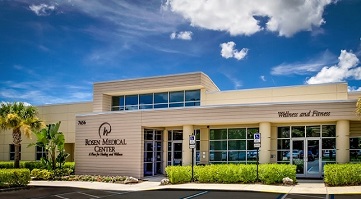 ORLANDO, FLA.—High medical costs and an ineffective healthcare system in the United States have encouraged outbound medical travel and dissuaded many foreign patients from considering it as a medical travel destination.
ORLANDO, FLA.—High medical costs and an ineffective healthcare system in the United States have encouraged outbound medical travel and dissuaded many foreign patients from considering it as a medical travel destination.
An innovative, self-insured employee healthcare model developed by Harris Rosen, the founder of Rosen Hotels & Resorts in Florida, has the potential to revolutionize medical care. Professors Frederick J. DeMicco, Ph.D. and Abe Pizam, Ph.D. examined what RosenCare offers.
Harris Rosen, Central Florida’s largest independent hotelier, is widely recognized as an entrepreneur and passionate philanthropist. He also founded RosenCare, a self-insured healthcare model that has already saved the company $340 million. These savings have been channeled into employee education, improvements in the dedicated medical center, and various philanthropic projects which have had a significant beneficial ripple effect far beyond the Rosen hotel sites.
The RosenCare success has attracted the attention of members of US Congress, the US Army and business executives, and several large companies including Disney have created similar programs.
Professors Fred DeMicco and Abe Pizam have recently produced a research paper assessing the RosenCare model. They conclude that it is a viable model that could be adopted by similar businesses. If the entire U.S. public and private sector took up this approach, they suggest there could be an annual savings of approximately $935 billion, simply by preventing unnecessary illnesses and diseases and by emphasizing the importance of a healthy lifestyle.
Wider adoption of the model has the potential, they believe, to drive down medical services prices in the United States, so making the country’s healthcare industry more competitive with competing medical tourism destinations like Brazil, Malaysia and Turkey.
What is Forcing Innovation in U.S. Healthcare?
There are a multitude of problems and challenges with the U.S. healthcare system. Commonly used words to describe it include “dysfunctional”, “inequitable”, “controlled by myopic traditional business practices and values”, “full of inbred greed”, and “fiscally and financially out of control”.
The United States spends $3.4 trillion per annum (17.5 percent of GDP) on its healthcare system (Chase, 2017). These healthcare costs nearly doubled in the ten years between 1999 and 2009. Families’ spending on healthcare has increased 25 percent since 2007, while at the same time other spending on basic needs such as clothing, housing, transportation, and food at home and away has decreased (Wall Street Journal, 2016).
The research paper identifies various reasons for this inefficiency including:
- Lack of accountability. Data shows that clinicians are not held accountable for their quality of care, with a misdiagnosis rate of 20-40 percent (Chase, 2017).
- The strength of lobbying by the healthcare and pharmaceutical industries, looking to protect the status quo and influence healthcare and insurance policies for their benefit.
- The domestic belief that American healthcare is “gold standard”. In fact, U.S. healthcare is twice as expensive as, and delivers significantly worse results than those of many other countries (Chase, 2017).
- Widespread conflicts of interest among benefit managers of business firms (insuring their employees) who hire benefit consultants, who are paid by health insurers and providers.
- Risk-averse human resources executives and CEO’s who will pay significant healthcare insurance premiums to keep employees happy and avoid lawsuits.
Set against this backdrop, the paper says it is estimated that at present 900,000 Americans travel each year outside their own country for medical treatments (Patients Beyond Borders, 2018). Those who travel abroad for medical treatments do so for two reasons. The first and by far the most important is price differentials. The second is alternative treatments that are not available in the United States.
And out of concern for their employee wellbeing, some American entrepreneurs have looked to build alternative cost-saving healthcare systems, born out of evidence, quality outcomes, transparency, compassion, and accountability.
The RosenCare Story
Rosen Hotels & Resorts is the largest independent hotel operator in Central Florida. In 1991, it started operating its own primary care health facility and service (RosenCare) for its associates and dependents. It is, according to the company, “a patient-centered onsite medical home model” based on five tenets: access, quality, service, cost and innovation.
Key features of the company’s health offering include:
- A 12,000-square-foot medical center for employees and their dependents to access routine healthcare services. It is equipped with used but functionally modern medical equipment, purchased for a much lower cost than new equipment (Chase, 2017).
- The center has a current staff of four full-time physicians, one part-time physician, three nurse practitioners, two physician assistants, and support staff who see and treat between 160 to 180 patients a day.
- Same-day appointments are available and transportation to the center is free. Doctor visits are on company time, so no one loses pay.
- Each center pays special attention to the management of chronic health conditions, with particular emphasis on preventative health and wellness. There are free health screenings for diabetes, breast cancer, colon cancer, sexually transmitted diseases, and high blood pressure. A registered dietitian is also available. As a result, medication compliance rate for Rosen associates is over 92 percent for cardiovascular medications (including hypertension) and 96 percent for diabetes, compared to national averages of 46 percent and 50 percent respectively.
- Out-of-pocket costs to Rosen’s covered employees are minimal. The most they pay for a prescription, for example, is $30 and most of the time prescription drugs are free. Wellness check-ups have a zero-dollar co-pay, and co-pays for specialists are $20.
- RosenCare premiums include dental coverage for $16.17 per week for the majority of individual associates and $53.05 per week for the majority of families.
- Rosen company events serve food approved by nutritionists and the dining area gives discounts on healthier food. The company also provides cooking and exercise classes.
- Rosen Hotels has zero tolerance for tobacco use and conducts random drug tests for its employees. It also has a mandatory stretching program for housekeeping staff and other employees who may have a higher propensity to musculoskeletal problems. These injuries were reduced by 25 percent.
On a per capita basis Rosen’s healthcare costs are about 40 percent less than the national average. In 2018, RosenCare’s cost per covered life was approximately $5,500 for its 5,700 employees. In the same year, the national average per covered life was over $11,000. In the hotel industry, annual employee turnover is approximately 60 percent, but at Rosen Hotels & Resorts it is in the low teens.
Based on its success, Harris Rosen has recently started a consulting company that will advise private and public sector organizations how to set up programs similar to RosenCare. He also wants to develop alternative approaches to other aspects of healthcare, including providing a fixed cost price in hospitals for all medical services associated with a particular diagnosis (e.g. bariatric surgery).
Relevance of the RosenCare Model to U.S. Medical Tourism Flows
The authors of this research paper state that if the RosenCare model and the Rosen method of hospital billing spreads throughout not only the U.S. hospitality and tourism industries but also other industries, inbound medical tourism to the United States will increase and outbound medical tourism will decrease. They provide the following reasons:
- The costs of medical services in the United States will decrease. As a result, the United States will be more competitive for inbound medical tourists, who will come for advanced medical procedures and treatments such as: coronary disease, cancer, cerebrovascular disorders, etc. It will also be more attractive to international tourists who seek cosmetic and dental surgeries.
- When inbound medical tourism to the United States reaches significant levels, more hotels will be interested in building accommodation facilities on hospital campuses that cater specifically to international visitors and their families. At present, there are already some examples of top brand hotels built on hospital campuses, e.g. Hilton/Baptist Hospital; Cleveland Clinic/Rosewood Hotel (Hospital Hotels, 2018).
- It is also possible that either Harris Rosen or some other hotel owners will eventually decide to extend the RosenCare model to their onsite guests, especially for non-complex or selective treatments.
- At present, most U.S. healthcare organizations provide healthcare services to their own employees through insurance companies that have specific programs tailor-made to the healthcare industry. If the RosenCare model is adopted in hospital groups, these organizations will incur significant employee healthcare savings that can be used to reduce the fees for medical services to medical tourists.
About the Authors
Professor Frederick J. DeMicco, PhD, RD is a Visiting Professor at the University of South Florida Sarasota—Manatee; Visiting Scholar, Department of Human Dimensions of Natural Resources, Colorado State University, Fort Collins, Colo.; Aramark Chair Emeritus, the University of Delaware and Visiting Professor, the Rosen College of Hospitality Management, the University of Central Florida, Orlando, Fla. Further information: FDeMicco@sar.usf.edu. Abe Pizam, PhD is Professor and former Dean of the Rosen College of Hospitality Management, the University of Central Florida, Orlando, Fla.






